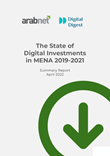
Last June, during the ArabNet Digital Summit 2014, the Managing Director of Eastern Europe and the Middle East and Africa region at Criteo, Dirk Henke, took to the stage talk about the change brought on by mobile for advertisers. He details this phenomena in the context of the quickly changing landscape triggered by the evolving behaviour of individuals and the advent of younger generations.
Henke commenced his talk noting that “it’s a really fascinating region, with a lot of spirit and a lot of things happening.” He cites Souk as an example of success, along with a number of local airway companies that are doing a phenomenal job, especially when compared with their European and US counterparts, before moving on to the “recent leanings and the magic” from Criteo’s shift into mobile advertising.
Desktop e-commerce is flattening. Mobile is the one actually spurring the growth. While it’s no secret that internet usage is growing on mobile, usage on desktop is growing as well, albeit at a slower pace. However the real surprise comes when you look at e-commerce activity. Overall, just like internet usage, activity is growing. But if you remove mobile commerce from the equation, you’ll see that e-commerce is actually quite flat. The notion still held by some advertisers that mobile users do not make purchases from mobile is patently false. Advertising on mobile is vital.
While making the shift to mobile, Criteo were faced three main challenges. “Number one, you really have to deal with two completely different worlds.” It’s mobile browsers versus in app advertising. Two completely different technologies, different environments with different needs and challenges “when it comes to advertising in particular.” Two, mobile advertising has mostly been spray and pray: “just get it out there and hopefully as many people as possible will download it (...) and then we just we hope that they will use it.” But retention rates for apps are extremely low. Only few people will come back to use an app after they initially download it. And to make things worse, actions and conversion rates are quite low as well for the ones that do come back. Three, the lack of standards. “This is a really big challenge for the advertising world when it comes to mobile,” since it came up “pretty quickly, something that is pretty new,” we have to work on the standards he concluded. So far, there hasn’t been any personalized ads in the mobile world, flash doesn’t work, and there are no real equivalents to URLs that could enable advertisers to channel users to the product site where they can immediately buy.
“The good news,” Henke adds, “the solutions are there.” A number of companies are looking to solve these challenges. There are efforts to develop deep linking solutions privacy positive IDs - means to track individuals without prying too much - and HTML5 could replace flash.
Another piece of good news, online consumption is shifting to mobile, and ad spend is following suit. The shift is even faster from desktop to mobile than it was from offline to online. For more information, check the the full talk below.
Latest Business
Intelligence Report













